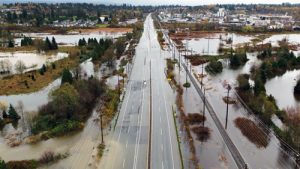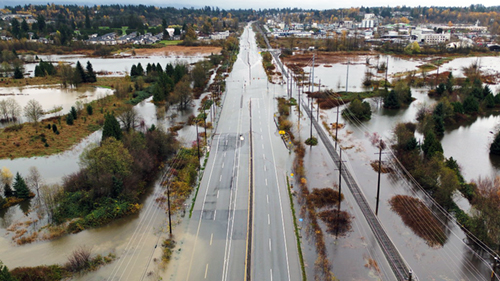
Rail and truck movement remained stymied at Port of Vancouver in British Columbia on Thursday in the aftermath of severe rain and flooding throughout Metro Vancouver and Fraser Valley.
Earlier this week, British Columbia’s Pacific region was besieged by two days of torrential downpours that have resulted in at least one woman dead, thousands of people displaced, cargo and business disrupted and thousands of dollars in massive damage.
The port’s marine terminals remain open through the disruption, but washouts and landslides have shut down Canadian Pacific Rail and Canadian National Railway’s main rail corridors between Vancouver and Kamloops, according to a port spokesperson.
It’s not yet known when rail operations to the West Coast will fully resume but the port said that CN and CP crews are making progress on efforts to clear debris and make repairs at multiple sites.
Transport Canada officials are in close contact with emergency responders to make sure the public is safe and damage to affected areas can be surveyed, but evacuation orders in various communities, logistical issues and safety concerns are making that a challenge, according to the port.
Meanwhile, primary highway routes to Metro Vancouver remain closed because of the flooding, but the port expects traffic to take two to three days to reopen.
Operators should also expect vessel delays and increased anchorage demand, the port said.
Reuters reported that the rains prompted Enbridge Inc. to close part of a British Columbia natural gas pipeline and that Trans Mountain pipeline, a major pipeline that moves as many as 300,000 barrels of crude between Alberta and the Pacific coast, was also closed.

